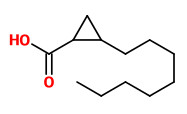Boswellia frereana Birdw. - Burseraceae - African elemi, elemi frankincense
Small tree or shrub, 3-8 m high, native to northern Somalia, cultivated also in Yemen; trunk distinct, swollen and often ± disc-shaped, to 0,7-1 m Ø at base; bark pale yellowish brown with some outer flaking papery layers.
https://npgsweb.ars-grin.gov/gringlobal/taxonomydetail.aspx?310552
http://www.ville-ge.ch/musinfo/bd/cjb/africa/details.php?langue=an&id=7733
„The gum-resin of B.frereana is, apart from its use as frankincense, also chewed and used in traditional medicine. It is a major export commodity from Somalia.“
http://plants.jstor.org/flora/flos000549
„The resin produced by this species is called “lobãn majdi” or commonly “maydi”. It is the most expensive brand of olibanum on the market… The hydrodistillate of B.frereana determined in this work was light yellow in color. The investigation of the essential oil by GC… and GC-MS indicated that the oil was predominantly composed of α-thujene (8.1%), α-pinene (38%), p-cymene (11%), limonene (2.4%), sabinene (2.6%), trans-verbenol (4.2%) and bornylacetate (2.8%). As diterpenoic constituents, isomers of α-phellandrene dimers were observed. They were recognized as the diagnostic markers of B.frereana.“
[Basar, Simla. „Phytochemical investigations on Boswellia species.“ Comparative studies on the essential oils, pyrolysates and boswellic acids of Boswellia carterii, 2005, 59 and 99]
https://ediss.sub.uni-hamburg.de/bitstream/ediss/984/1/Dissertation-Simla_Basar.pdf
Main volatile components of B.frereana resin detected by headspace SPME-GC/MS were α-thujene (9.8%), p-cymene (7.8%), sabinene (3.2%), cis-verbenol (3.5%), verbenone (3.1%), bornylacetate (3.8%) and a dimer of α-phellandrene (15.6%).
[A chemical investigation by headspace SPME and GC-MS of volatile and semi-volatile terpenes in various olibanum samples. Hamm, S., Bleton, J., Connan, J., & Tchapla, A., Phytochemistry, Vol.66(12), 2005, 1499-1514]
The (1S,2S)-(+)-trans- and (1S,2R)-(+)-cis-2-octylcyclopropyl-1-carboxylic acids (olibanic acids) were detected in ppm amounts in acidic extracts obtained from B.frereana. These acids provide the very characteristic old churchlike endnote of the frankincense odor.
[Cerutti‐Delasalle, C., Mehiri, M., Cagliero, C., Rubiolo, P., Bicchi, C., Meierhenrich, U. J., & Baldovini, N. (2016). The (+)‐cis‐and (+)‐trans‐Olibanic Acids: Key Odorants of Frankincense. Angewandte Chemie, 128(44), 13923-13927]



